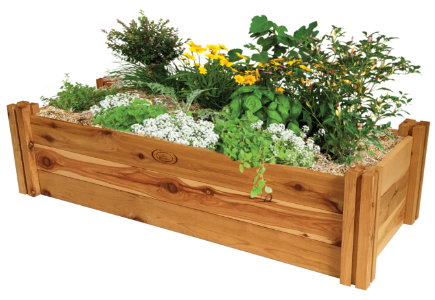Designing a solid garden bed is an essential aspect of creating a beautiful and functional garden. A well-designed garden bed not only enhances the aesthetic appeal of your outdoor space but also ensures the health and longevity of your plants. In this article, we will delve into the key elements of solid garden bed design, providing you with practical tips and insights to help you create a garden bed that is both stylish and sturdy.

Understanding the Basics of Solid Garden Bed Design
Before diving into the specifics, it's important to understand the basic principles of solid garden bed design. A solid garden bed should have a strong foundation, proper drainage, and be constructed with durable materials. But what exactly makes a garden bed solid?
"A solid garden bed is one that can withstand the elements, support plant growth, and maintain its structure over time." - Garden Design Expert
Choosing the Right Materials
One of the most critical aspects of solid garden bed design is selecting the right materials. The materials you choose will determine the durability and longevity of your garden bed. Common materials include wood, stone, and metal. Each material has its own set of advantages and disadvantages.
- Wood: Wood is a popular choice due to its natural look and ease of use. However, it may require more maintenance to prevent rot and insect damage.
- Stone: Stone is incredibly durable and adds a timeless appeal to your garden. It can be more expensive and labor-intensive to install.
- Metal: Metal garden beds are modern and sleek, offering excellent durability. They can be prone to rust if not properly treated.
For example, the Wooden Garden Bed from our product catalog is an excellent choice for those looking for a natural and rustic look.
Ensuring Proper Drainage
Proper drainage is crucial for the health of your plants. Without adequate drainage, water can accumulate in the soil, leading to root rot and other issues. To ensure proper drainage, consider the following tips:
- Use a well-draining soil mix.
- Incorporate organic matter to improve soil structure.
- Install a drainage layer at the bottom of the bed, such as gravel or sand.
Additionally, you can watch this video on drainage tips to get a better understanding of how to implement these techniques effectively.
Designing for Aesthetics and Functionality
A solid garden bed design should not only be functional but also visually appealing. Consider the following elements to enhance the aesthetics of your garden bed:
Incorporating Edging
Edging helps to define the boundaries of your garden bed and adds a polished look. You can use materials such as bricks, stones, or metal to create a clean edge. Edging also helps to keep the soil and mulch in place, reducing maintenance.
Choosing the Right Plants
Selecting the right plants is essential for a successful garden bed. Consider the climate, soil type, and sunlight availability when choosing plants. Group plants with similar needs together to ensure they thrive. For instance, drought-tolerant plants are ideal for areas with limited water availability.
Maintaining Your Solid Garden Bed
Maintenance is key to preserving the integrity of your solid garden bed design. Regularly check for signs of wear and tear, such as rotting wood or rusting metal. Keep the soil healthy by adding compost and mulch, and ensure that plants are pruned and watered as needed.
By following these tips and paying attention to the details, you can create a garden bed that is both stylish and sturdy. A well-designed garden bed not only enhances the beauty of your outdoor space but also provides a healthy environment for your plants to thrive.








